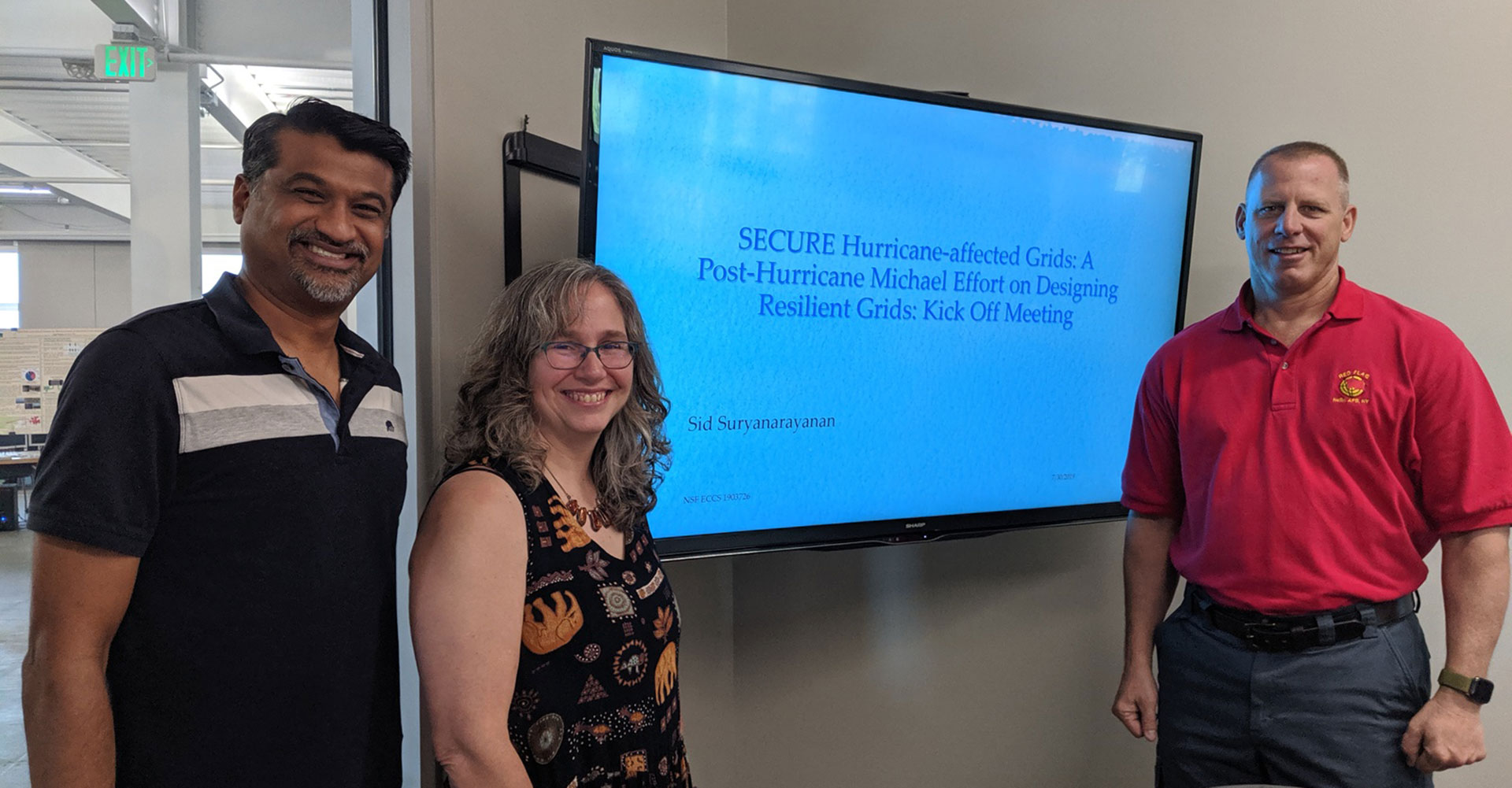
When Hurricane Michael tore through the Florida Panhandle in 2018, it wiped out 90% of the city of Tallahassee’s electric power, causing loss of interconnection with a neighboring utility, and affecting 1.2 million people in the southeastern United States.
In light of the human toll of hurricanes, a cross-disciplinary Colorado State University team is working to minimize those losses. With $194,000 in National Science Foundation support through the agency’s Rapid Response Program (RAPID), they are designing a self-reliant, local, resilient electric system that can better withstand the next Category 5 hurricane.
The research, led by Department of Electrical and Computer Engineering Professor Sid Suryanarayanan, combines sustainable electric grids, systems engineering and behavioral psychology. The overall goal is a solution that provides uninterrupted or minimally interrupted electric supply to a large portion of the population.
“Over one year, we intend to achieve a framework for targeted design of microgrids for the city of Tallahassee,” said Suryanarayanan, who has studied microgrid engineering for over a decade. “The target, in this case, is increasing resiliency for a hurricane-prone region.”
Partnering with Tallahassee
The team will partner with city of Tallahassee officials for access to the city’s emergency preparedness plans and existing utilities and infrastructure. An improvement plan, to be delivered at the project’s conclusion, is expected to lay groundwork for a generalized approach that’s extendable to other communities.
Joining the research team is Department of Psychology Associate Professor Pat Aloise-Young, whose expertise is in the design of programs that promote lasting behavioral change, particularly in the realm of energy conservation. Aloise-Young will lead data-gathering in the form of interviews and surveys to contextualize Suryanarayanan’s technical work around microgrid infrastructure. Ultimately, she says, successful implementation of a plan depends on understanding identified needs versus what constituents are willing to trade-off.
“I think engineers are coming to realize that you can design all the technology you want, but it’s not going to achieve the benefits you hoped for if you don’t have stakeholder buy-in,” Aloise-Young said.
She added that working with engineers provides a unique opportunity to see behavioral psychology principles in action. “The impact of my work is amplified by my collaborations with engineers,” she said.
Systems approach
The final third of the project leadership team is Bo Marzolf, a faculty member in the Department of Systems Engineering whose expertise is in systems-level emergency management practices. Through his research, Marzolf has observed that post-hurricane emergency response can resemble an “ad hoc pick-up game” with complex layers including medical systems, critical infrastructure, utilities and even military intervention in extreme situations.
“I will work to ensure we have a system here that balances not just human factors and engineering, but also how it fits into the emergency response system writ large,” Marzolf said.

Sid Suryanarayanan, Pat Aloise-Young and Bo Marzolf at their grant kickoff meeting at Powerhouse Energy Campus.